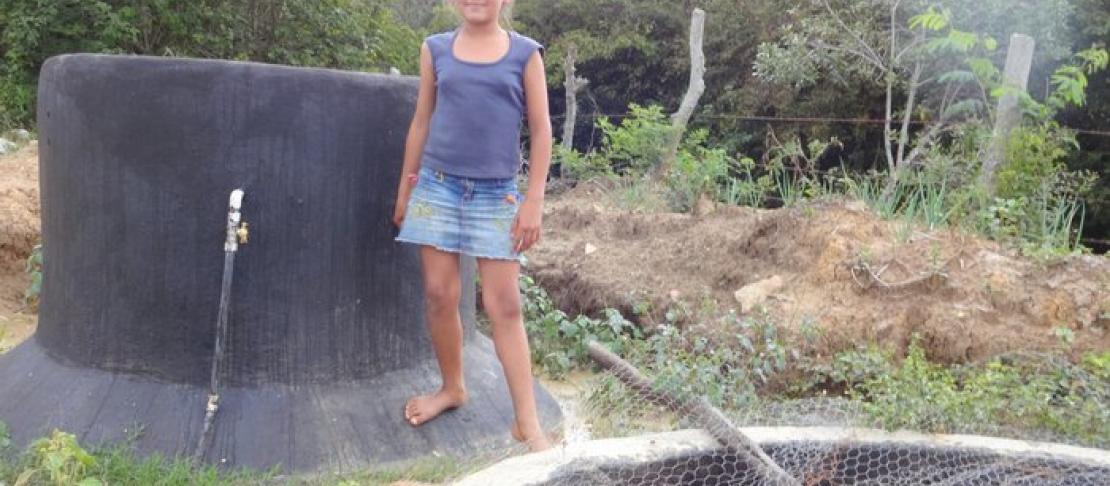Jorge Daza's marvellous biogas machine

The small plot of cassava and fruit trees behind Jorge Daza’s house in the Colombian village of Macaregua in Santander looks something like the scene of a UFO crash.
Strange cement tanks dot the hillside, tubes and pipes running haphazardly alongside them – the debris of the wreck. A great black bottle-shaped cylinder lies buried up to its neck in the orange clay soil – the mother ship.
It may not be extraterrestrial, but it is still unusual: a fully functioning biodigester that converts livestock manure into gas for Jorge’s kitchen.
One of the main culprits for agriculture’s contribution to climate change is livestock production, in large part due to greenhouse gases released from manure and animal digestive tracts. From 2005 to 2030, emissions of methane and nitrous oxide from manure management alone are projected to rise by 17 percent.
What would happen if we could prevent the release of these gases and at the same time use them for something practical?
Ongoing research from the CGIAR Research Program on Climate Change, Agriculture and Food Security (CCAFS) is taking a look at what farmers in Colombia can do - and are doing - to adapt to the effects of climate change while being mindful of mitigation.
Read the full story by Caity Peterson on the Thomson Reuters Foundation blog.
Related stories on the CCAFS blog:
Caity Peterson is a visiting researcher and science writer based at the International Center for Tropical Agriculture (CIAT) in Cali, Colombia, working on CCAFS Theme 1: Adaptation to Progressive Climate Change.
